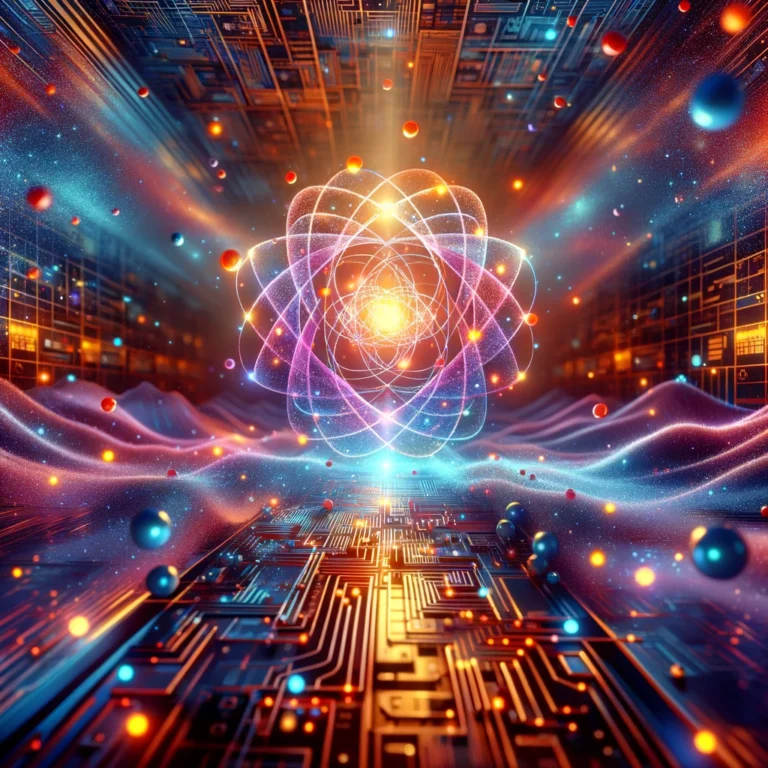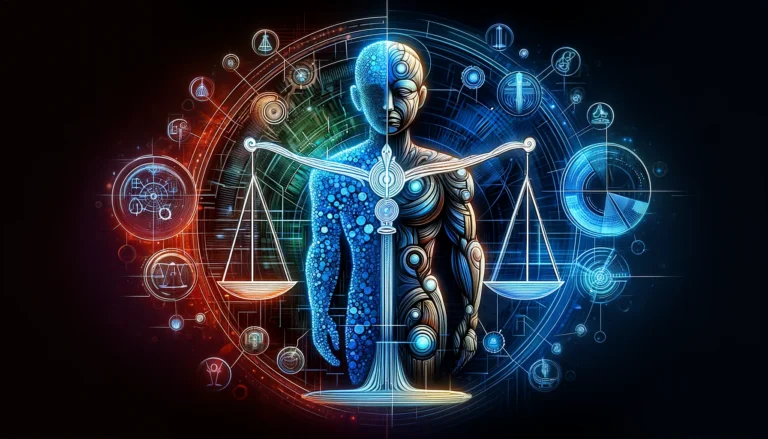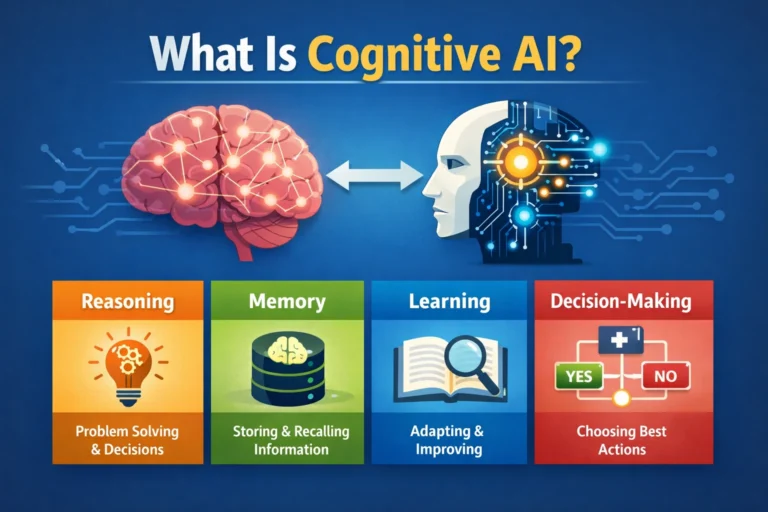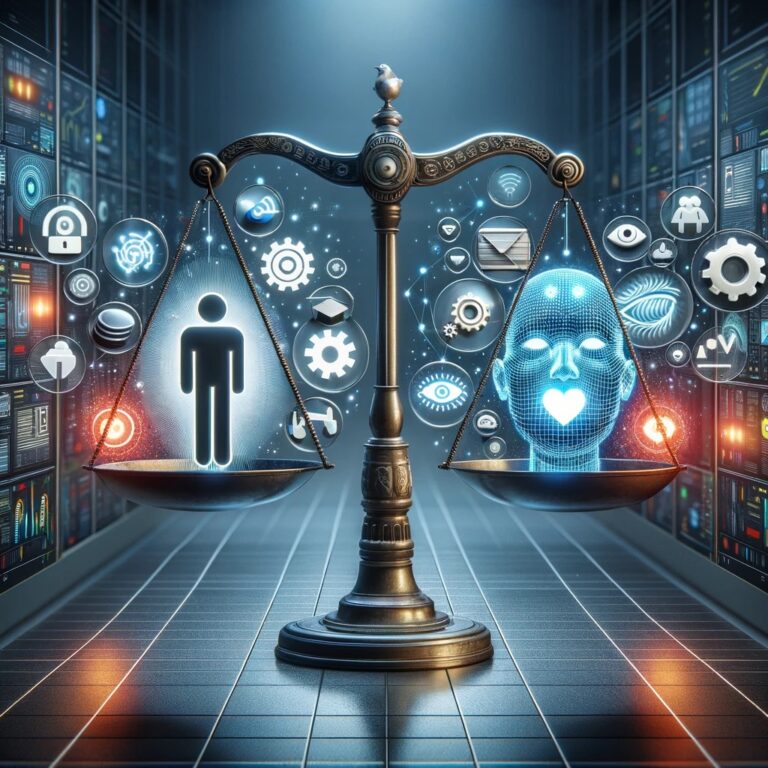AI in Space Exploration: Beyond the Horizon
AI in space exploration marks a pivotal shift in humanity’s quest to explore the cosmos. With its unparalleled data processing capabilities and decision-making prowess, AI is not merely an adjunct to human intelligence but a cornerstone technology reshaping the fabric of space missions. From autonomous navigation of spacecraft to the analysis of vast datasets from distant galaxies, AI is at the forefront of the new age of space exploration. This introduction aims to highlight the integral role of AI in advancing our journey to the stars and the significance of integrating these technologies into space missions.
1. AI’s Role in Advancing Space Exploration
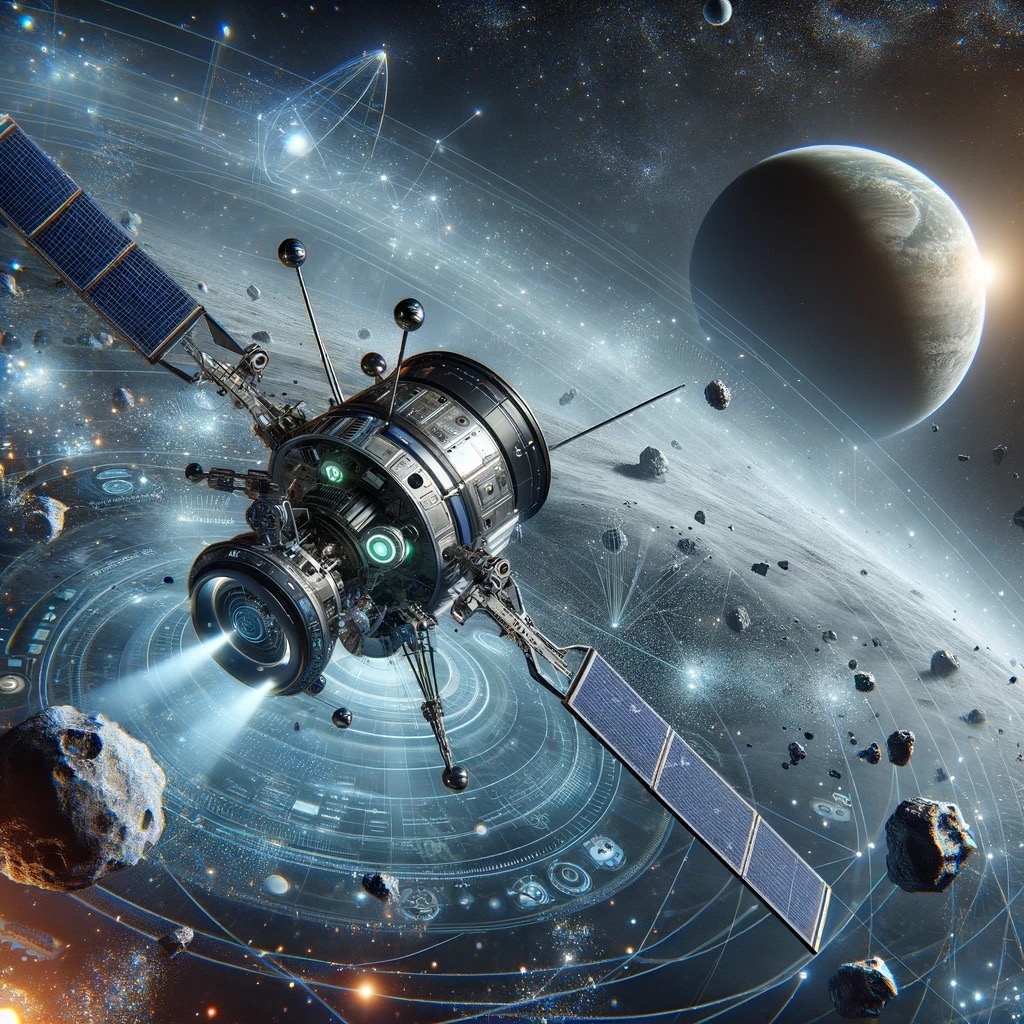
Overview of AI’s Role in Advancing Space Exploration
AI technologies, encompassing machine learning, neural networks, and advanced algorithms, have become indispensable in addressing the complex challenges of space exploration.
These challenges include navigating through uncharted territories, analyzing celestial phenomena, and managing the vast amounts of data generated by space missions.
AI’s ability to learn from data, identify patterns, and make predictive analyses is revolutionizing how we approach these challenges, enabling more ambitious and scientifically rich space missions.
The application of AI extends across various aspects of space exploration:
- Data Analysis: AI algorithms process and interpret data from telescopes and space probes, uncovering new insights about the universe at speeds and accuracies far beyond human capabilities.
- Autonomous Operations: Spacecraft and rovers equipped with AI can make real-time decisions, navigate autonomously, and adapt to unexpected situations without direct intervention from Earth.
- Mission Efficiency: AI optimizes mission planning, trajectory calculations, and resource allocation, significantly enhancing the efficiency and success rate of space missions.
The Significance of Integrating AI Technologies in Space Missions
Integrating AI into space exploration is not just a technological achievement but a strategic advantage in our quest to understand the universe.
Space’s vast distances and harsh conditions make direct human exploration and oversight challenging, if possible, in many contexts.
AI bridges this gap, enabling spacecraft to operate independently, make critical decisions in real-time, and execute complex scientific tasks.
Moreover, AI-driven astronomical data analysis is paving the way for discoveries that expand our knowledge of the universe.
By sifting through data from telescopes and space missions, AI has helped identify new exoplanets, understand the dynamics of distant galaxies, and uncover clues about the cosmos’s fundamental nature.
The significance of AI in space exploration also lies in its potential to make space missions more sustainable and cost-effective.
By optimizing routes, managing resources efficiently, and reducing the need for constant human monitoring, AI can significantly lower the barriers to space exploration, opening up new possibilities for research and discovery.
As we stand on the brink of a new era in space exploration, AI emerges as a critical ally in the quest to explore the unknown.
Its role in advancing our understanding of the universe, enhancing the autonomy of space missions, and improving the efficiency of space operations underscores the transformative impact of AI technologies.
Integrating AI into space missions represents a leap forward in technological capabilities and a fundamental shift in how we approach space exploration.
As we continue to push the boundaries of what is possible, AI will undoubtedly play a central role in shaping the future of space exploration, driving our quest to uncover the mysteries of the cosmos.
2. AI in Satellite Imagery and Analysis

The advent of Artificial Intelligence (AI) has significantly transformed the field of satellite imagery and analysis, marking a new epoch in Earth observation and planetary studies.
This transformative impact stems from AI’s unparalleled ability to process, analyze, and interpret vast amounts of data generated by satellites orbiting Earth and other celestial bodies.
Use of AI for Processing and Interpreting Satellite Data
AI and machine learning algorithms have become indispensable tools for processing satellite mission data. These technologies excel at identifying patterns, anomalies, and trends within the data, often surpassing human capabilities in speed and accuracy.
- Image Classification and Object Detection: AI models are trained to classify land use, detect changes in urbanization, and identify natural phenomena such as forest fires, floods, and hurricanes. This classification is vital for monitoring environmental changes and aiding disaster response and management.
- Temporal Analysis for Change Detection: AI algorithms analyze sequences of satellite images over time, detecting subtle changes that may indicate environmental degradation, urban expansion, or the effects of climate change. This temporal analysis is crucial for long-term ecological monitoring and policy-making.
Examples of AI-driven Advancements in Earth Observation and Planetary Studies

- Climate Change Monitoring: AI algorithms process satellite data to track changes in sea ice coverage, ocean temperatures, and greenhouse gas concentrations. These insights are critical for understanding the dynamics of climate change and informing global climate policies.
- Agricultural Monitoring and Management: AI-powered satellite imagery analysis helps assess crop health, predict yields, and optimize irrigation practices. This application of AI supports sustainable agriculture by enabling more efficient use of water and fertilizers.
- Planetary Mapping and Exploration: Beyond Earth observation, AI assists in analyzing satellite data from other planets and moons. For instance, AI algorithms have been used to map the Martian terrain, identify water ice deposits on the Moon, and analyze the atmospheric compositions of distant exoplanets.
- Disaster Response and Recovery: In the aftermath of natural disasters, AI-driven analysis of satellite imagery quickly identifies affected areas, assesses damage, and helps coordinate response efforts. This rapid assessment capability is essential for saving lives and mitigating disaster impacts.
Integrating AI into satellite imagery and analysis represents a leap forward in our ability to monitor and understand our planet and beyond.
By harnessing the power of AI, scientists and researchers can uncover new insights into Earth’s changing ecosystems, climate patterns, and the solar system’s mysteries.
As AI technologies evolve, their application in satellite imagery and analysis is set to expand, offering even more profound understanding and more nuanced interpretations of the data captured from the final frontier.
The future of Earth observation and planetary studies is intrinsically linked to the advancements in AI, promising unprecedented opportunities for discovery and exploration in the vast expanse of space.
3. AI in Autonomous Spacecraft Navigation
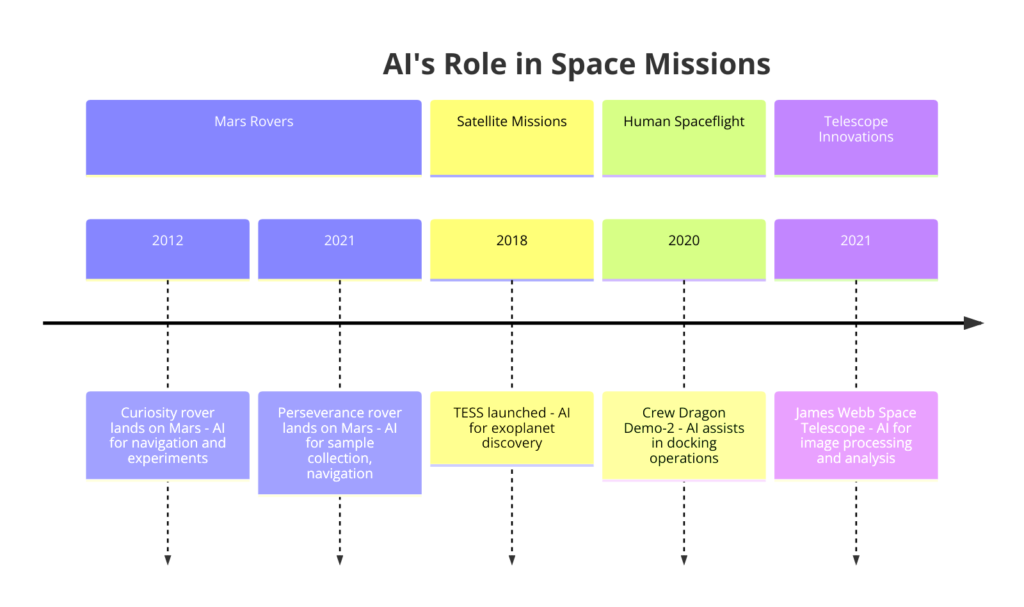
Space exploration is increasingly leveraging Artificial Intelligence (AI) to empower the autonomous navigation of spacecraft and rovers, marking a significant evolution in how missions are conducted beyond Earth.
This autonomy is crucial for exploring distant celestial bodies, where communication delays render real-time human control impractical.
AI-driven systems can make split-second decisions, ensuring mission safety and success in the unpredictable space environment.
How AI Enables Autonomous Navigation for Spacecraft and Rovers
AI and machine learning algorithms enable spacecraft and rovers to navigate autonomously through space and on alien terrains.
These systems process data from onboard sensors, cameras, and radars to identify obstacles, determine safe paths, and execute complex maneuvers without direct human intervention.
- Obstacle Detection and Avoidance: AI algorithms analyze imagery from onboard cameras to identify potential hazards, such as craters on the Moon or Mars, and autonomously adjust the route to avoid them.
- Path Planning: Machine learning models predict the safest and most energy-efficient paths, considering the vehicle’s current state, terrain complexity, and mission objectives.
- Real-time Decision Making: In environments where conditions can change rapidly, AI systems provide the agility to make real-time decisions, adapting the mission plan to ensure objectives are met while maintaining safety.
Case Studies of Successful AI-assisted Missions
- Mars Rovers (Curiosity, Perseverance): NASA’s Mars rovers have utilized AI for autonomous navigation across the Martian surface, allowing them to travel greater distances with improved safety. AI systems onboard analyze terrain and obstacles to plan daily routes, enhancing the rovers’ ability to conduct scientific research autonomously.
- OSIRIS-REx Asteroid Sample Return Mission: The OSIRIS-REx spacecraft employed AI for the critical task of autonomously navigating to the surface of the asteroid Bennu, collecting samples, and returning to Earth. AI algorithms processed data in real time to adjust the spacecraft’s descent and ensure a successful touchdown on a small, rocky surface.
- Autonomous Maneuvering Satellites: Several missions involve satellites equipped with AI to autonomously maneuver in orbit, avoiding space debris and optimizing observation paths. This capability is crucial for maintaining the longevity and effectiveness of satellites in increasingly crowded orbital environments.
The integration of AI into the navigation systems of spacecraft and rovers represents a paradigm shift in space exploration.
By enabling autonomous navigation, AI enhances the scientific capabilities of these missions and opens up new frontiers for exploration.
As AI technology advances, its role in spacecraft navigation is set to become even more pivotal. It promises to unlock the mysteries of the cosmos with unprecedented efficiency and precision.
The success of AI-assisted missions underscores the potential of AI as a critical companion in humanity’s quest to explore the unknown realms of space.
4. AI in Space Mission Planning and Simulation

Integrating Artificial Intelligence (AI) into space mission planning and simulation represents a transformative shift in the aerospace industry.
AI’s ability to process complex data sets, predict outcomes, and optimize strategies is revolutionizing mission design, planning, and execution.
This section explores AI’s pivotal role in enhancing the efficiency and effectiveness of space mission planning and the innovations driving forward this technological frontier.
The Application of AI in Mission Planning
AI algorithms are instrumental in tackling the intricate challenges of space mission planning.
These challenges include trajectory optimization, resource allocation, and the simulation of mission scenarios to identify potential issues before launch.
- Trajectory Optimization: AI systems analyze vast amounts of celestial data to determine the most efficient paths for spacecraft, taking into account gravitational forces, fuel consumption, and mission timelines. This optimization ensures that missions utilize resources effectively and can achieve their objectives within the constraints set by physics and budget.
- Mission Simulation: AI-driven simulations offer a dynamic platform for testing mission scenarios, from launch to landing. These simulations predict how spacecraft will behave under various conditions, allowing engineers to address potential challenges and refine mission designs preemptively.
- Resource Allocation: AI helps in planning the allocation of resources, such as fuel and time, by predicting the needs of different mission phases. This predictive capability is crucial for long-duration missions, where efficient resource use can significantly impact mission success.
Innovations in AI for More Efficient Mission Designs
The advancements in AI technology have led to several innovations in space mission planning, making missions more adaptable, efficient, and capable of achieving complex scientific objectives.
- Genetic Algorithms for Trajectory Design: Genetic algorithms, a type of AI, evolve optimal mission trajectories by simulating natural selection processes. This method has been particularly effective in designing innovative paths that minimize fuel consumption and time, such as the Interplanetary Transport Network.
- Machine Learning for Anomaly Detection: Machine learning models trained on historical mission data can predict and identify potential system anomalies during the mission planning phase. This early detection allows for the design of a contingency plan and enhances the mission architecture’s overall robustness.
- AI in Crewed Mission Planning: For crewed missions, AI simulates life support systems, crew activities, and potential emergency scenarios. This application ensures that mission planning thoroughly considers human factors, enhancing crew safety and feasibility.
AI’s role in space mission planning and simulation is an emblem of the future of aerospace engineering, offering a gateway to more ambitious and scientifically rewarding space missions.
By leveraging AI for trajectory optimization, mission simulation, and resource allocation, space agencies and companies can design missions that are not only feasible but also optimized for success and scientific discovery.
As AI technologies evolve, their application in mission planning is expected to become even more sophisticated, paving the way for innovations that could redefine our approach to exploring space.
Integrating AI into space exploration underscores a commitment to pushing the boundaries of what is possible, leveraging the best technology to explore the final frontier.
5. AI in Astronomical Data Analysis

The surge of Artificial Intelligence (AI) in astronomical data analysis has heralded a new era in astrophysics and cosmology.
With the advent of high-resolution telescopes and interstellar probes, the volume of data generated from space observations has escalated exponentially, far exceeding the capacity for traditional analysis methods.
With its robust data processing and pattern recognition capabilities, AI is uniquely poised to sift through this cosmic deluge, unveiling insights that push the boundaries of our understanding of the universe.
Utilizing AI to Analyze Vast Amounts of Astronomical Data
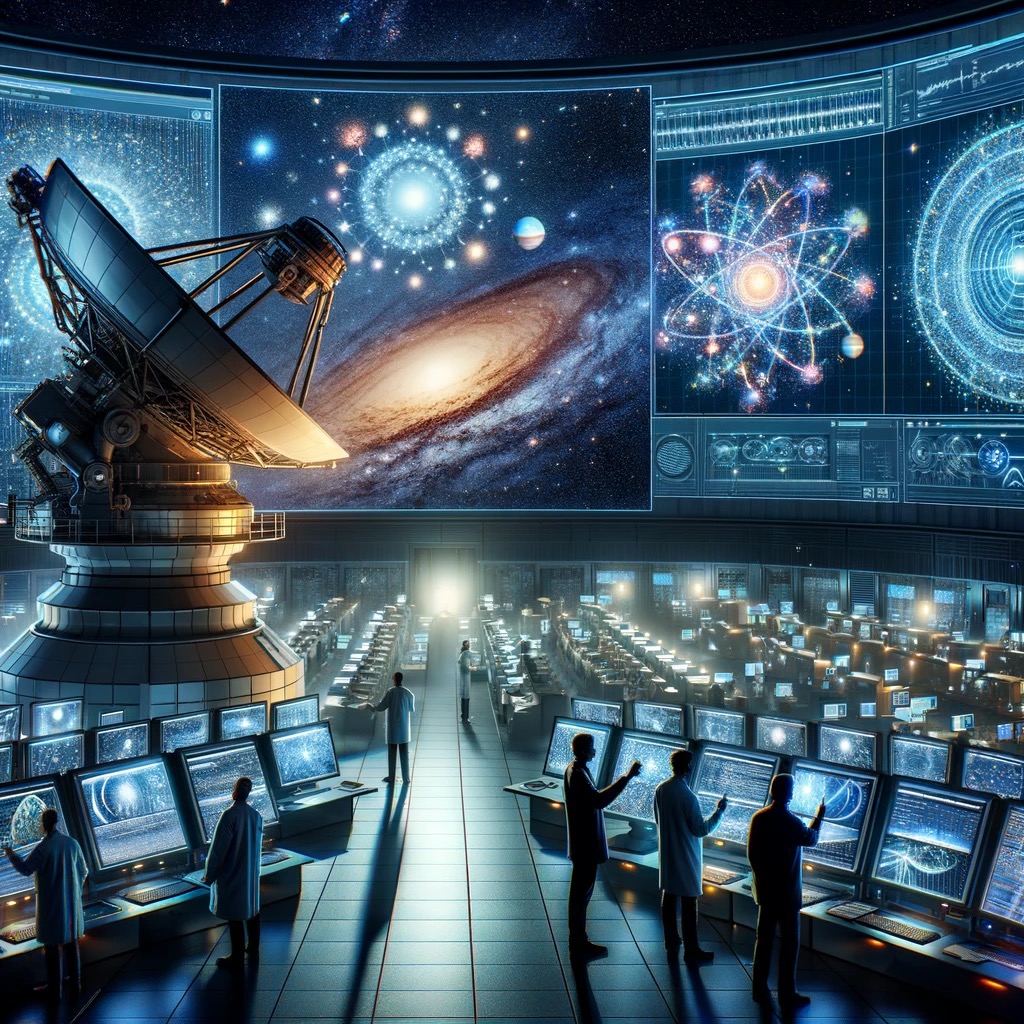
The cornerstone of AI’s impact on astronomical data analysis lies in its ability to efficiently process and analyze vast datasets, identifying patterns, anomalies, and correlations that elude human observation.
- Pattern Recognition: AI algorithms excel in detecting patterns within astronomical data, such as identifying specific types of galaxies, star formations, or cosmic events. This capability facilitates the classification of celestial objects and phenomena at a scale and speed unmatched by human efforts.
- Anomaly Detection: AI can identify outliers or anomalies within data sets, often representing new or rare cosmic phenomena. These discoveries can advance our understanding of the universe, uncovering events like supernovae, black hole mergers, or unusual star behavior.
- Signal Processing: In the search for extraterrestrial intelligence (SETI), AI algorithms analyze radio signals collected from space, distinguishing potential artificial signals from cosmic background noise. This monumental task showcases AI’s pivotal role in extending our sensory reach into the cosmos.
AI’s Role in Discoveries and Research in Astrophysics
AI-driven analysis has already contributed to groundbreaking discoveries in astrophysics, demonstrating its indispensable role in modern astronomical research.
- Exoplanet Discovery: AI has been instrumental in identifying exoplanets from the data collected by space telescopes like Kepler. By analyzing the light curves of distant stars for the telltale dips caused by transiting planets, AI algorithms have significantly expanded our catalog of known exoplanets, including those that reside in habitable zones.
- Galaxy Classification: Machine learning models have automated the classification of galaxies, sorting them into morphological types based on their shape and structure. This automation aids in studying galaxy formation and evolution and provides insights into the cosmic web that structures the universe.
- Cosmic Web Mapping: AI techniques are being used to map the cosmic web, the large-scale structure of the universe made up of galaxies, galaxy clusters, and dark matter. By analyzing galaxy redshift surveys, AI helps reveal the filamentary structures that define the distribution of matter in the universe, offering clues to its overall geometry and fate.
AI’s integration into astronomical data analysis represents a quantum leap forward for space science, enabling researchers to navigate the vastness of space data with unprecedented precision and insight.
As AI technologies continue to advance, their application in astrophysics promises to unlock further mysteries of the universe, from the fundamental forces that shape cosmic evolution to the potential for life on distant worlds.
The future of astronomical discovery is inextricably linked to the evolution of AI, standing as a testament to humanity’s enduring quest to understand the cosmos and our place within it.
The marriage of AI with astronomy not only accelerates our capacity for discovery but also deepens our appreciation for the complexity and majesty of the universe.
6. Challenges and Ethical Considerations in AI-driven Space Exploration

Integrating Artificial Intelligence (AI) into space exploration has opened new frontiers in investigating and interacting with the cosmos.
However, this integration has its challenges and ethical considerations.
These span from technical hurdles and safety concerns to broader questions about humanity’s role in space and the treatment of extraterrestrial environments.
Addressing these challenges is crucial for AI’s sustainable and responsible advancement in space exploration.
Addressing the Challenges of Deploying AI in Space Exploration
- Reliability and Safety: Given space’s harsh and unforgiving environment, AI systems used in exploration must exhibit unparalleled reliability. The risk of malfunction or incorrect decision-making by AI could jeopardize missions and pose significant safety risks in crewed flights. Ensuring AI systems are thoroughly tested and equipped with fail-safes is paramount.
- Communication Delays and Autonomy: Space exploration often involves operating in environments with significant communication delays with Earth. This necessitates a level of autonomy in AI systems that can introduce challenges in oversight and control. Balancing AI autonomy with human oversight is a technical and operational challenge that must be navigated carefully.
- Data Management and Processing: The vast amounts of data generated by space missions pose significant processing, storage, and analysis challenges. AI systems must be adept at managing and extracting valuable insights from this data, requiring advanced algorithms and substantial computing resources.
Ethical Considerations in AI-driven Space Exploration and Research
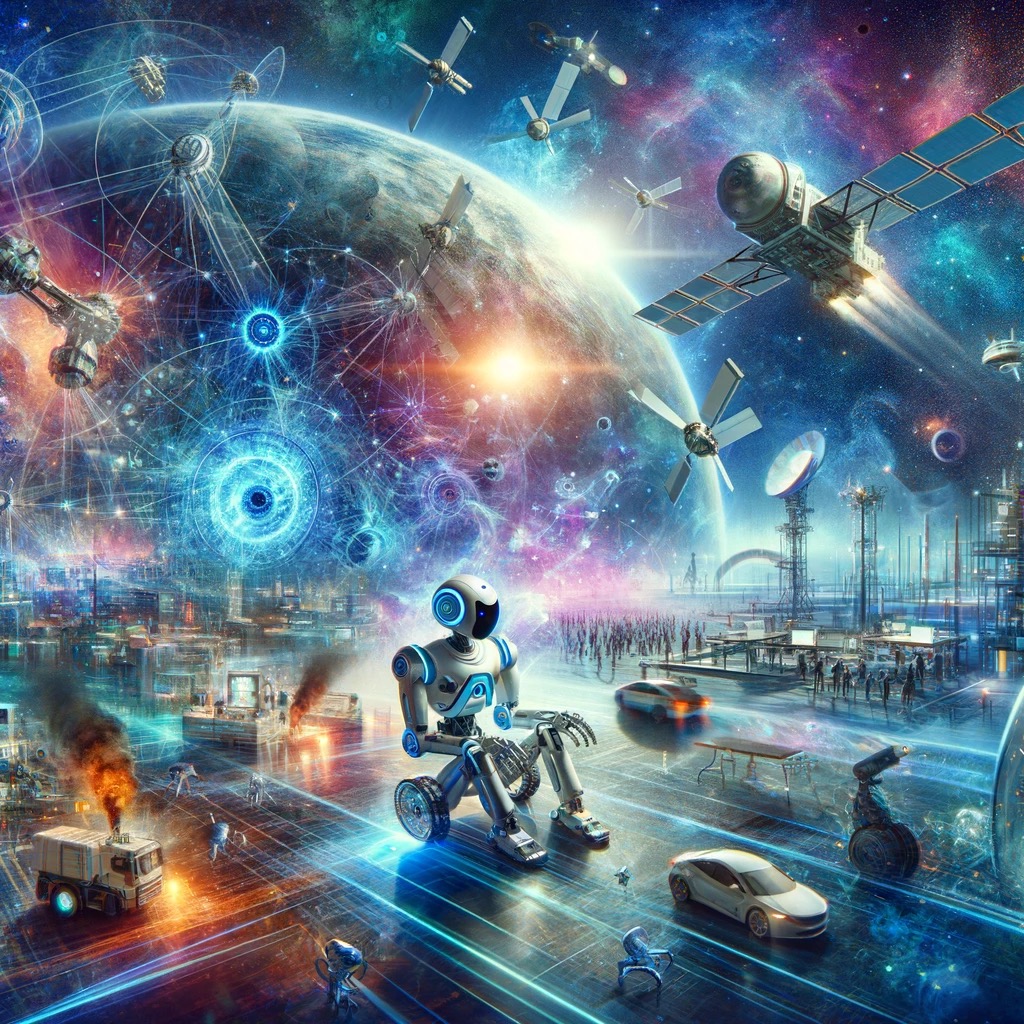
- Decision-making Authority: As AI systems take on more autonomous roles in space exploration, questions arise about their decision-making authority, especially in critical situations. Establishing ethical guidelines for AI decision-making in space exploration is crucial to addressing potential conflicts between machine-driven decisions and human moral standards.
- Impact on Extraterrestrial Environments: Exploring other planets and moons, particularly those that might harbor life or the conditions for life, raises ethical concerns about contamination and preservation of these environments. AI-driven missions must be designed strictly according to planetary protection protocols to avoid harmful impacts on extraterrestrial ecosystems.
- Data Interpretation and Bias: The use of AI in analyzing and interpreting space exploration data introduces the risk of algorithmic bias, which could skew scientific findings or overlook important discoveries. Ensuring the transparency and fairness of AI algorithms is essential to maintain the integrity of space research.
- Access and Equity: The benefits of AI-driven space exploration, including the potential for commercial exploitation of space resources, raise concerns about equitable access and the distribution of benefits. Ensuring that space remains a domain for all humanity rather than a frontier dominated by a few is an ethical imperative.
Strategies for Overcoming Challenges and Ensuring Ethical AI Use
To address these challenges and ethical considerations, several strategies can be employed:
- Robust Testing and Validation: Implementing rigorous testing and validation processes for AI systems before deployment in space missions can help ensure reliability and safety.
- Development of Ethical Guidelines: Creating comprehensive ethical guidelines for developing and using AI in space exploration can guide decision-making and ensure that missions are conducted responsibly.
- Transparency and Openness: Maintaining transparency in AI development and mission planning can foster trust and facilitate international cooperation, ensuring that space exploration benefits humanity.
- Engagement with Stakeholders: Involving a broad range of stakeholders, including the scientific community, policymakers, and the public, in discussions about AI’s role in space exploration can help address ethical concerns and promote equitable access to space resources.
While AI presents significant opportunities to advance space exploration, navigating the associated challenges and ethical considerations is essential for the responsible use of technology.
By implementing rigorous testing, developing ethical guidelines, maintaining transparency, and engaging with various stakeholders, we can ensure that AI contributes positively to our understanding of the cosmos and sustainable space exploration.
The future of space exploration powered by AI holds great promise, but it must be pursued with a commitment to safety, ethical integrity, and inclusivity.
7. The Future of AI in Space Exploration

Integrating Artificial Intelligence (AI) into space exploration is at the cusp of revolutionizing how we explore and understand the cosmos.
As AI technologies evolve, their application in space missions is set to expand, promising to unlock new possibilities and push the boundaries of human exploration further into the unknown.
Predictions for AI’s Evolving Role in Space Exploration
- Enhanced Autonomy in Spacecraft and Rovers: Future space missions will likely see an increased autonomy in spacecraft and rovers, enabled by advanced AI systems. These systems will be capable of conducting complex scientific research, making real-time decisions, and adapting to unforeseen challenges without direct human intervention, thus enabling the exploration of more distant and less accessible celestial bodies.
- AI-driven Astrobiology: The search for life beyond Earth will be significantly advanced through AI, with algorithms designed to analyze atmospheric data, detect chemical signatures of life, and interpret findings from remote sensors. AI could play a crucial role in identifying habitable exoplanets and analyzing samples from Mars and other celestial bodies for signs of life.
- Deep Space Communication and Navigation: AI will enhance deep space communication technologies, improving the efficiency and reliability of transmitting vast amounts of data across the solar system. Additionally, AI will refine navigation techniques for interstellar travel, potentially laying the groundwork for future missions to the outer planets and beyond.
- AI in Space Habitat Design and Management: As we plan long-duration human missions and establish habitats on other planets, AI will be instrumental in designing and managing these complex systems. AI could monitor life support systems, optimize resource use, and ensure the health and safety of astronauts, all while adapting to the challenges of extraterrestrial environments.
Emerging Trends and Potential Future Advancements in AI for Space Missions
- Quantum Computing and AI: Integrating quantum computing with AI could lead to breakthroughs in processing speed and efficiency, enabling data analysis from space missions at unprecedented speeds. This synergy could accelerate discoveries in cosmology, particle physics, and the universe’s fundamental forces.
- AI in Space Manufacturing and Construction: The development of AI-driven robots capable of manufacturing and construction in space presents a promising avenue for building spacecraft, satellites, and space habitats directly in orbit or on other planets. This approach could reduce the costs and risks associated with launching materials from Earth.
- Ethical AI Governance in Space Exploration: As AI takes on more critical roles in space exploration, establishing ethical governance frameworks to guide AI development and deployment will become increasingly important. These frameworks must address issues of autonomy, accountability, and the ethical use of AI in making discoveries that could have profound implications for humanity.
The future of AI in space exploration is bright, with the potential to transform how we explore space and expand our understanding of the universe.
As AI technologies advance, their integration into space missions promises to enhance efficiency, safety, and scientific discovery.
However, realizing this potential will require careful consideration of the ethical implications, robust international cooperation, and a commitment to innovation and excellence.
The journey ahead for AI in space exploration is not just about technological advancement but also about charting a course for the future of humanity among the stars, guided by the principles of sustainability, inclusivity, and responsible stewardship of the cosmos.
8. Conclusion: AI’s Transformative Impact on Space Exploration
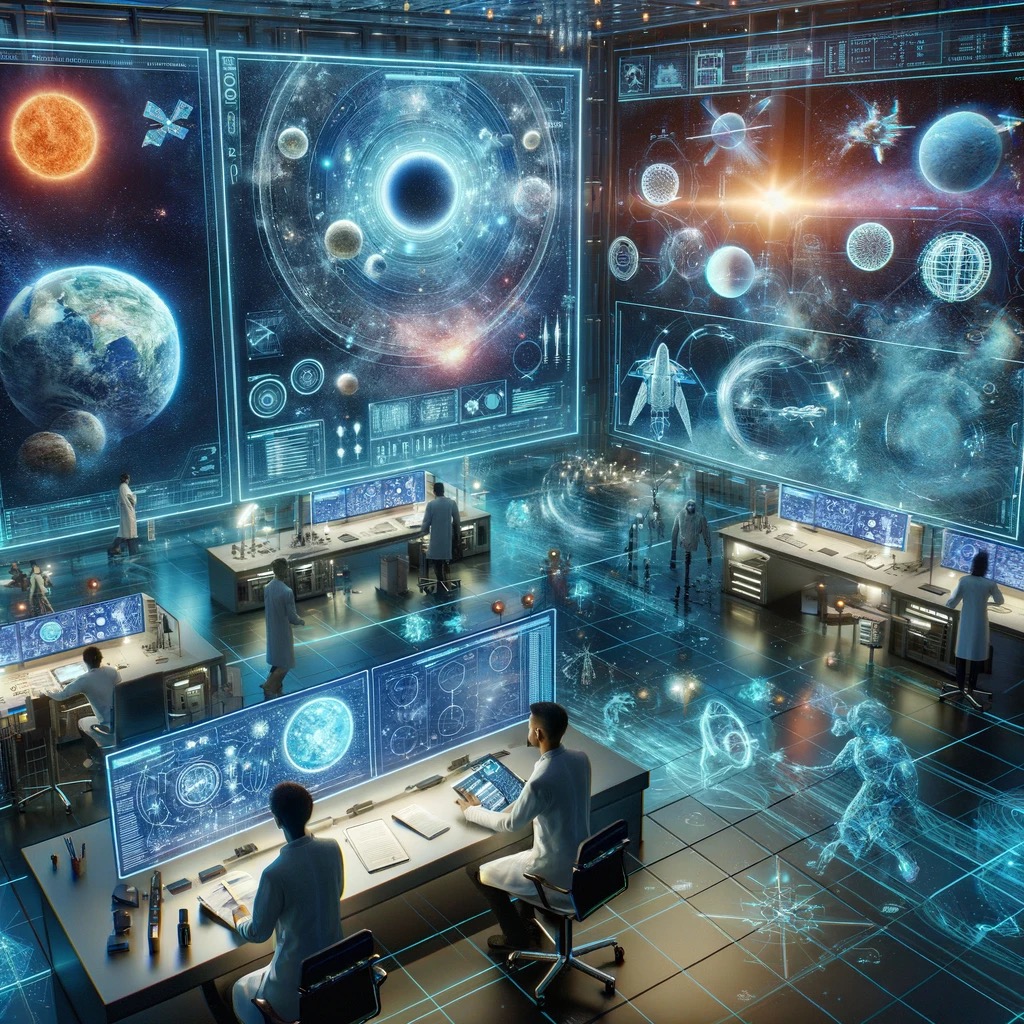
The exploration of space stands as one of humanity’s most profound endeavors, a testament to our innate curiosity and desire to understand the cosmos.
Integrating Artificial Intelligence (AI) into this quest has accelerated our capacity for discovery and expanded the realms of possibility for what can be achieved.
As we have explored throughout this discussion, AI’s role in space exploration is multifaceted, enhancing everything from satellite imagery analysis and autonomous navigation to mission planning and the search for extraterrestrial life.
This conclusion aims to encapsulate the transformative impact of AI on space exploration and to encourage continued innovation and responsible use of AI in unlocking the mysteries of the final frontier.
AI technologies have become indispensable allies in the quest to explore space.
They offer solutions to some of the most challenging aspects of space missions, including navigating through unknown terrains, analyzing astronomical data, and optimizing mission parameters for efficiency and success.
The achievements in AI-driven space exploration to date are just the beginning.
As AI continues to evolve, its contributions are expected to become even more significant, pushing the boundaries of exploration and discovery.
However, the journey forward is challenging.
The deployment of AI in space exploration raises complex technical, ethical, and logistical questions.
Ensuring the reliability of AI systems, managing the vast amounts of data generated by space missions, and addressing ethical considerations around autonomy and decision-making are crucial for the sustainable advancement of space exploration.
Moreover, as space becomes increasingly accessible, ensuring that the benefits of AI-driven exploration are shared equitably across humanity remains a paramount concern.
The future of AI in space exploration is replete with potential. From the prospect of AI-assisted habitats on other planets to the use of AI in deciphering the universe’s signals, the possibilities are as vast as space itself.
Emerging trends, such as integrating AI with quantum computing and developing AI-driven space manufacturing, promise to further revolutionize space exploration, making missions more efficient, ambitious, and far-reaching.
In conclusion, AI’s transformative impact on space exploration is undeniable. It enhances our ability to explore the unknown, answer fundamental questions about our place in the universe, and dream of futures once thought impossible.
Encouraging continued innovation in AI and responsible and ethical use is essential as we venture further into space.
The final frontier offers challenges to overcome and opportunities for growth, discovery, and reflection on what it means to be a part of this vast, mysterious cosmos.
As we continue to explore space, powered by the advancements in AI, we do so with the hope of a future where technology and humanity together reach new heights of understanding and achievement.
FAQ & Answers
1. How is AI used in space exploration?
AI is used in satellite imagery analysis, autonomous spacecraft navigation, mission planning, and the analysis of astronomical data, enhancing efficiency and discovery.
2. What are the challenges of implementing AI in space exploration?
Challenges include ensuring AI systems’ reliability in extreme conditions, managing long-distance communications, and handling vast data volumes.
Quizzes
Quiz 1: “AI in the Cosmos” – Identify AI technologies used in various space exploration scenarios.
Let’s explore how AI technologies are applied in the context of space exploration. Here are several scenarios where AI plays a crucial role. Your task is to identify the specific AI application or technology being used in each case:
- Rover Navigation on Mars: A rover exploring the Martian surface autonomously navigates rough terrain, avoiding obstacles, and deciding the most efficient paths to scientific points of interest without constant instructions from Earth.
- Spacecraft Anomaly Detection: An AI system onboard a spacecraft monitors its systems in real-time, identifying and diagnosing unforeseen issues or malfunctions, potentially even before they pose a significant threat to the mission or crew.
- Astrophotography Analysis: AI algorithms analyze images captured by space telescopes to identify celestial objects, classify galaxies, and detect exoplanets orbiting distant stars, significantly speeding up the process of discovery.
- Cosmic Event Prediction: Using vast amounts of historical and real-time space observation data, AI models predict cosmic events, such as solar flares or asteroid paths, helping scientists prepare for and study these phenomena.
- Communication Optimization with Earth: AI enhances communication systems between spacecraft and Earth, reducing delays and errors in data transmission over vast distances. This ensures the reliability of critical mission data being sent and received.
- Automated Scientific Experimentation: Onboard a space station, AI systems autonomously conduct scientific experiments, adjusting parameters in real-time based on initial results, and managing resources efficiently to maximize scientific output.
Identify the AI applications or technologies used in each of these space exploration scenarios.
Here are the AI applications or technologies being utilized in the described space exploration scenarios:
- Rover Navigation on Mars: This scenario employs Autonomous Navigation Systems powered by AI. These systems enable rovers to make real-time decisions about their paths, avoiding obstacles and efficiently exploring scientific points of interest on Mars’ surface.
- Spacecraft Anomaly Detection: The technology is AI-driven Anomaly Detection Systems. These systems continuously monitor spacecraft health, using machine learning to identify and diagnose potential issues early, ensuring the safety and success of space missions.
- Astrophotography Analysis: This scenario uses AI in Image Analysis and Pattern Recognition. AI algorithms process images from space telescopes to detect and classify astronomical objects, greatly accelerating the discovery process and enhancing our understanding of the universe.
- Cosmic Event Prediction: The application is Predictive Modeling with AI. By analyzing vast datasets, AI models forecast cosmic events, such as solar flares or asteroid trajectories, aiding in the preparation and study of these space phenomena.
- Communication Optimization with Earth: This involves AI-Enhanced Communication Systems. AI optimizes data transmission between spacecraft and Earth, improving the speed and accuracy of long-distance communications critical to mission operations.
- Automated Scientific Experimentation: The technology is AI for Autonomous Scientific Research. On space stations, AI systems conduct experiments without direct human intervention, dynamically adjusting experiment parameters and managing resources to maximize research outcomes.
Each of these applications highlights the transformative potential of AI in advancing space exploration, from enhancing the autonomy and efficiency of spacecraft to accelerating scientific discovery and ensuring the success of missions beyond Earth’s atmosphere.
Quiz 2: “Space Missions and AI Innovations” – A quiz on recent space missions that utilized AI technologies.
Let’s focus on recent space missions and the innovative AI technologies they utilized. For each description, try to identify the specific mission or the AI technology applied:
- AI for Surface Exploration: A recent mission to Mars deployed a rover equipped with AI to enhance its ability to navigate the Martian terrain autonomously, analyze soil samples, and select interesting geological features for closer examination, all without direct, real-time input from mission control.
- AI in Satellite Constellation Management: A company launched a constellation of satellites equipped with AI to improve Earth observation capabilities. The AI optimizes imaging schedules based on weather conditions and client requests, ensuring high-quality data collection for environmental monitoring and disaster response.
- AI-Assisted Astronaut Support: On a manned mission to the International Space Station, astronauts tested an AI assistant designed to help with daily tasks, provide reminders for scientific experiments, and offer psychological support, acting as a companion and tool for enhancing mission efficiency.
- AI for Deep Space Communication: A mission to explore the outer planets incorporated AI to manage the spacecraft’s communication system. The AI technology optimized data transmission back to Earth, ensuring that the vast distances involved did not compromise the quality or speed of scientific data received.
- AI-Powered Astrophotography Enhancement: During a mission to observe distant galaxies, an AI was used to process and enhance images captured by a space telescope. The AI technology improved the resolution and clarity of photos, allowing astronomers to observe celestial phenomena in unprecedented detail.
Identify the specific space missions or the AI technologies that were described in these scenarios.
The descriptions provided align with general applications of AI in space exploration rather than specific missions. However, I can illustrate how these technologies are conceptually applied in space missions and the types of missions where they might be found:
- AI for Surface Exploration: This scenario resembles the technology used in NASA’s Mars rovers, such as Perseverance, which landed on Mars in February 2021. Perseverance and its predecessors, like Curiosity, utilize autonomous navigation and scientific analysis tools to explore the Martian surface, making decisions on the move to study the planet’s geology and search for signs of past microbial life.
- AI in Satellite Constellation Management: Companies like Planet Labs and SpaceX (with its Starlink satellite internet service) employ AI to manage their satellite constellations. AI optimizes satellite positioning, imaging schedules, and data transmission to improve Earth observation and global internet coverage.
- AI-Assisted Astronaut Support: The CIMON (Crew Interactive Mobile CompanioN) developed by Airbus for the German Aerospace Center (DLR) and used on the International Space Station (ISS) is an example. CIMON is designed to assist astronauts with tasks and serve as a companion, leveraging AI for interaction and task management.
- AI for Deep Space Communication: Missions like NASA’s Voyager probes and the New Horizons mission to Pluto involve complex communication challenges with Earth. While not initially launched with AI, the concept of using AI to optimize deep space communication reflects ongoing research into improving data transmission for current and future deep space missions.
- AI-Powered Astrophotography Enhancement: The Hubble Space Telescope and the James Webb Space Telescope (JWST) use advanced image processing techniques to enhance the quality of astrophotography. While primarily based on pre-existing algorithms, the integration of AI and machine learning methods is an area of active development to further improve the analysis and visualization of space imagery.
Each scenario reflects the potential or actual use of AI technologies to enhance the efficiency, effectiveness, and scientific output of space missions, demonstrating the critical role AI plays in pushing the boundaries of what’s possible in space exploration.


